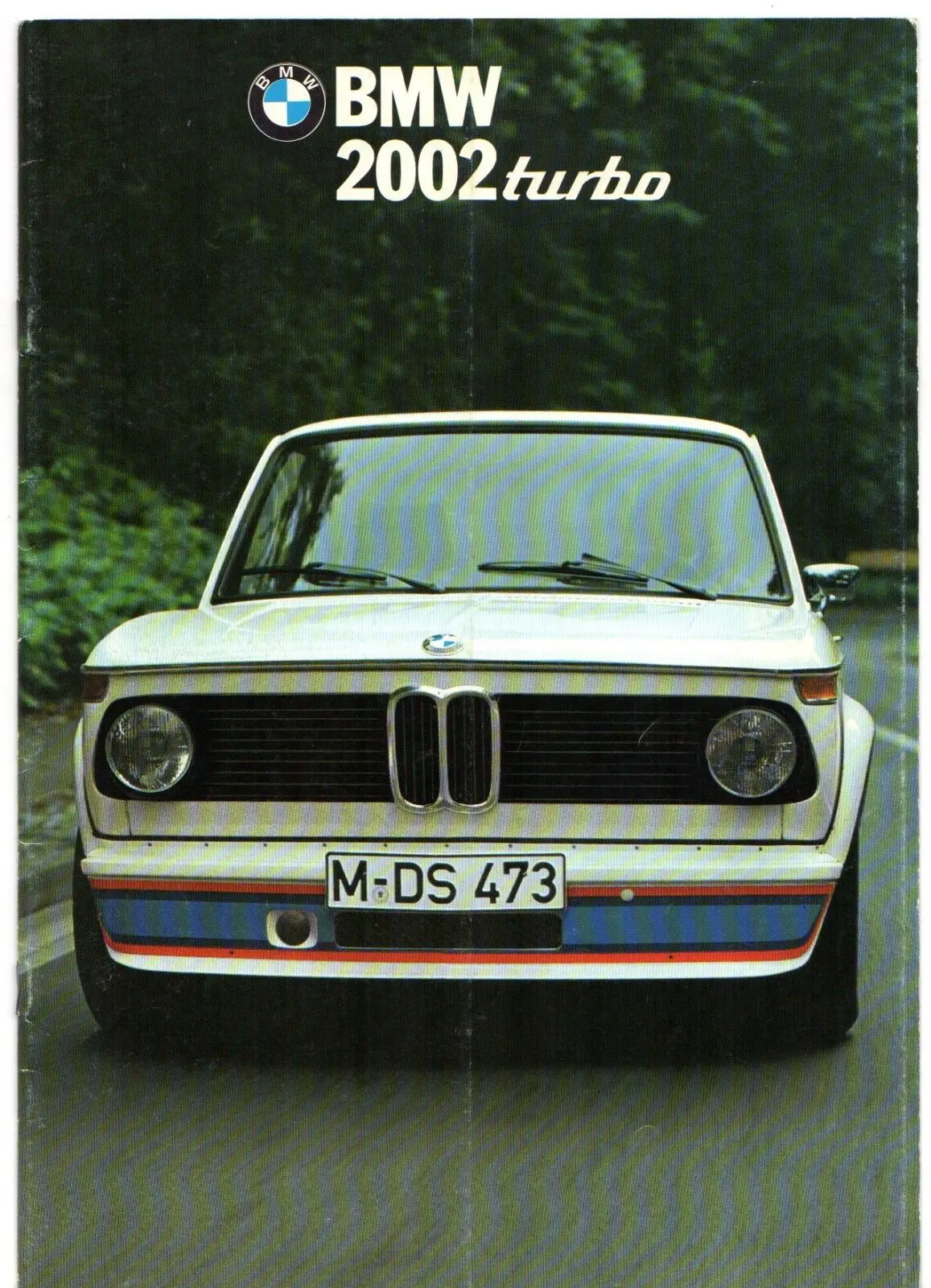The BMW 2002 Turbo at Fifty
20 December 2023
As I recently noted in my blog about the 3-Series, during the 1970s, any BMW seemed to be an exclusive sight on British roads, while the 2002 Turbo belonged in the realm of the exotic. My younger self barely understood what the word meant – nor, I suspect, did many of my parent’s generation – but the looks of the first Turbocharged European production car from a major manufacturer utterly mesmerised.
The story of the Turbo begins on the 9th March 1966, when BMW unveiled the 1600-2. Shortly afterwards, Alex von Falkenhausen, the designer of the M10 engine, and BMW’s head of planning Helmut Werner Bonsch, independently had their ‘02’s fitted with a 1,990cc engine. They decided to approach the Board of Directors with a plan for a production 2-litre version, and the 2002 debuted at the Brussels Motor Show in January 1968.

To quote David E. Davis Jr. of Car and Driver, “In the suburbs, Biff Everykid and Kevin Acne and Marvin Sweatsock will press their fathers to buy HO Firebirds with tachometers mounted out near the horizon somewhere”, but “they could fit more friends into a BMW in greater comfort and stop better and go around corners better”. By 1971 the 2002 Tii offered Kugelfischer mechanical fuel injection, larger wheels, modified suspension, and brakes. For those drivers who craved more performance than Tii’s 120 mph top speed, the 1973 Frankfurt Motor Show starred the 2002 Turbo.
Kuhnle, Kopp, and Kausch made the turbocharger, while BMW’s engineers fitted the Tii with a larger oil cooler and radiator and a lowered compression ratio to prevent explosions. The 2002 Turbo further boasted modified suspension, brakes, transmission, and a limited-slip differential, while the power output increased from 130bhp to 170bhp. Some observers wondered why BMW did not fit an exhaust bypass, but von Falkenhausen stated there was no room for such a layout.
Inside, the Turbo had sports seats, a turbo pressure gauge, and a leather three-spoke steering wheel. GRP arches accommodated the larger wheels, while BMW festooned the exterior with stripes. The especially keen owner could further specify the optional five-speed Getrag transmission.
One impetus behind the Turbo was BMW’s need to make 5,000 examples to comply with Group 1 racing and rallying homologation regulations. Another was being able to proclaim, “The first turbocharged hand-assembled car in the world to be put into series production”. The advertisement also urged motorists to “Go bananas”. The Turbo was capable of 131 mph, with 170 bhp power output. von Falkenhausen believed:
The engine could easily take more, and the transmission still has a small margin. We rather thought that 170 bhp was about the limit for the running gear of a car not necessarily driven by experts only.
Autocar thought the Turbo gave “Exhilarating performance without any temperament”. They also noted that at £4,300.31, the 2002 Turbo was still considerably cheaper than the Porsche 911S. “Cheaper” is, of course, a subjective term. In the UK, the BMW cost three times more than three Mini 850s, and the home market Turbo was 18,720 DM - 4,000 DM more than the Tii. Road & Track reported from Germany:
It was not before a short stretch of Autoreportedbahn was reached, on the way to BMW’s test track, that the car showed its Jekyll-and-Hyde character by the way it rocketed up to the provisional 100-km/h (62-mph) limit. This speed, by the way, is reached in 2nd of the four gears in the standard gearbox.
Back in the UK, Motor Sport found:
The Turbo 2002 would potter along quite happily at low revs, true enough, yet it lacked any sort of performance until the turbocharger reached full activity beyond 4,500 rpm. From then on the performance was stupendous for a 2-litre saloon, spoilt only by the wide gear ratios in the 4-speed box: changing up 31 the 6,450 rpm. red line brought the revs down below 4,500 rpm again. For optimum performance the optional 5-speed gearbox would be essential.
The Observer referred to the 2002 Turbo as an example of BMW practising the “Subtle art of stealing trousers” from Mercedes-Benz. It must be said that the Turbo’s looks were the opposite of understated. Motor Sport regarded it as “not a car for the conservative minded” due to its air dams and plastic wheel-arch extensions. They also wrote of how “the final touch to the ‘cowboy’ image is added by a mirror image ‘Turbo 2002’ on the front spoiler” while some members of the German media accused the front air dam of “provoking aggressiveness”. BMW eventually dispensed with the reverse lettering on the production 2002 Turbos.
The English-language brochure assured potential buyers, “The turbo-charger is not complicated and needs no additional service”. Alas, the timing of its debut could not have been worse, for 1973 was also the year of the OPEC Oil Crisis. When production ended in June 1975, BMW had made just 1,672 examples, while to say the 2002 Turbo was never a common sight in this country is an understatement Autocar complained: “It is a pity something as simple as excessive heat in the steering box should be the reason why an acceptable right-hand-drive version is not available”.
Perhaps the 2002 Turbo’s primary legacy is anticipating the future of automotive engineering. In 1973, Helmut Bönsch of BMW told the press that the need to cut down on emissions meant there was a need for engines to compensate for power lost in the process without incurring weight and fuel cost penalties. The 2002 Turbo had the potential to be the forerunner to a new generation of cars.
Plus, for many Britons (including this writer), the mirror writing was one of the Turbo’s principal attractions.
